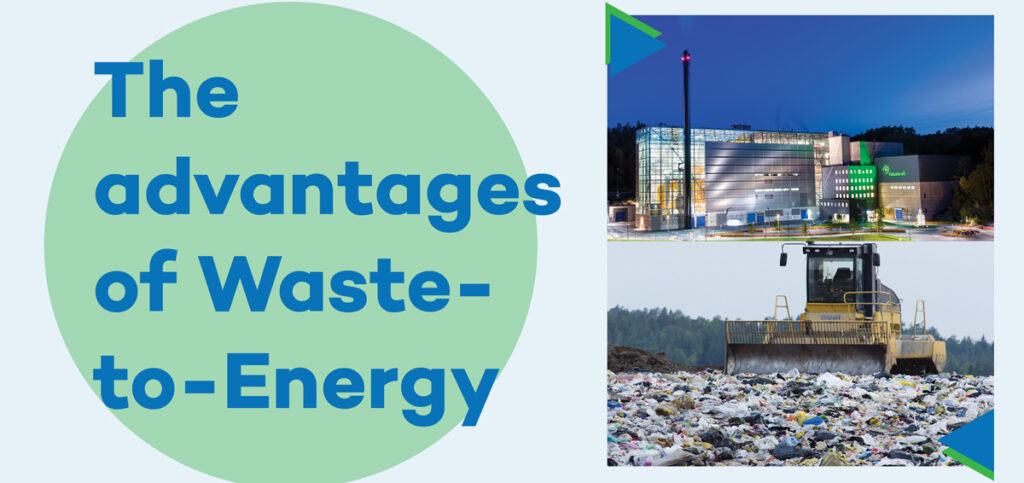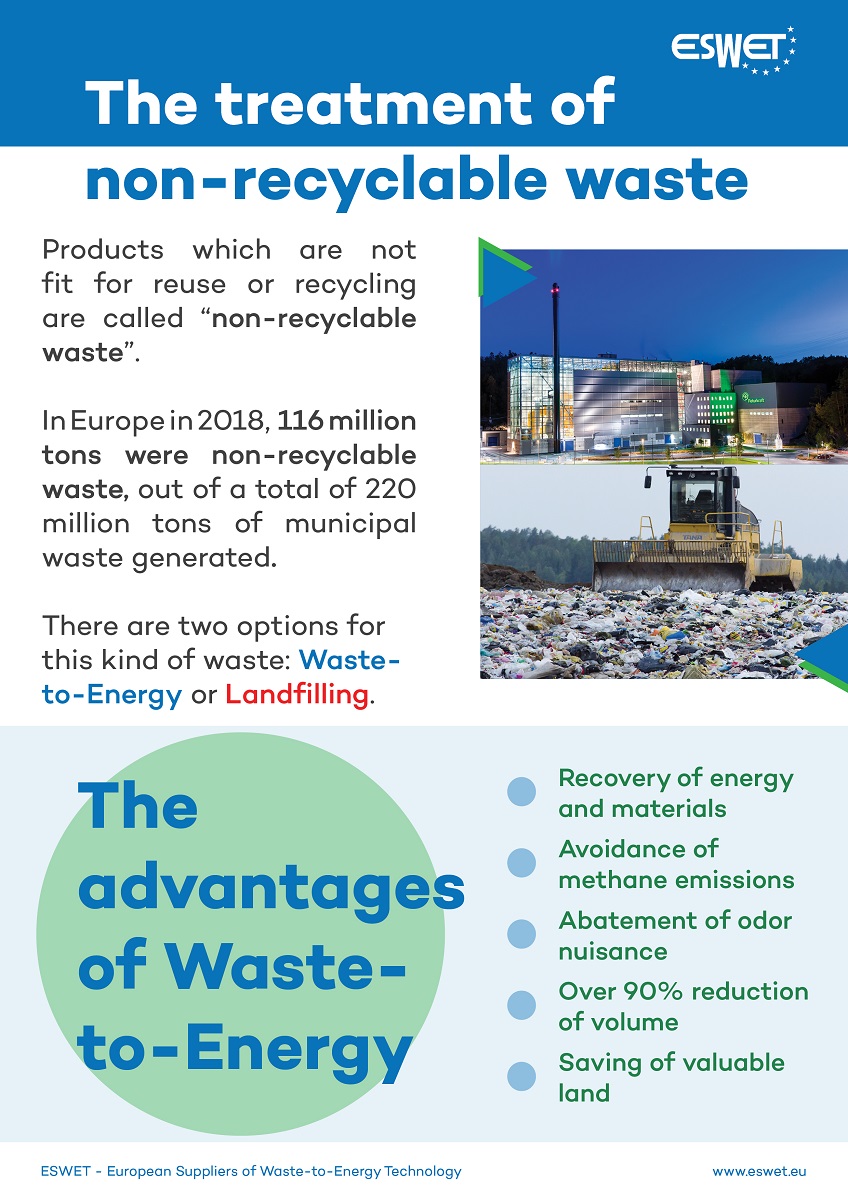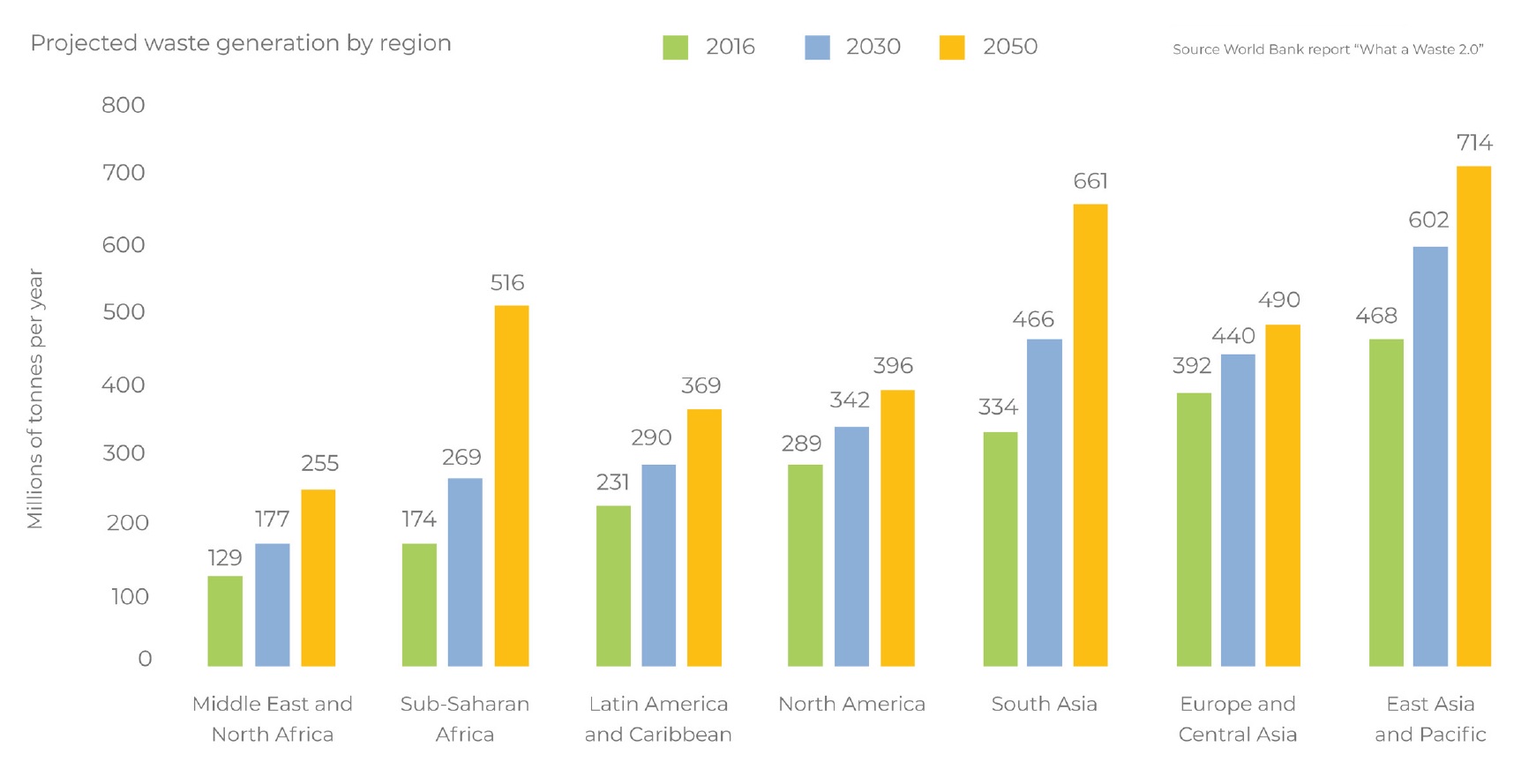The Treatment of Non-Recyclable Waste
10.05.2020

In 2018, people in Europe generated around 220 million tons of municipal waste, of which 116 millions was non-recyclable waste. What is non-recyclable waste and how can it be treated?
Click here for the pdf version
Products that are not fit for reuse or recycling are called “non-recyclable waste”. In Europe in 2018, 116 million tons were non-recyclable waste, out of a total of 220 million tons of municipal waste generated. There are two options for this kind of waste: Waste-to-Energy or Landfilling.
The advantages of Waste-to-Energy:
- Recovery of energy and materials
- Avoidance of methane emissions
- Abatement of odor nuisance
- Over 90% reduction of volume
- Saving of valuable land
What is non-recyclable waste?
Non-recyclable waste can be quite diverse items, for a variety of reasons:
- Polluted waste
- Degraded waste (e.g. after several rounds of recycling)
- Waste made up of composite materials
Waste generation will greatly increase worldwide by 2050. Our duty is to manage it in a sustainable way.

